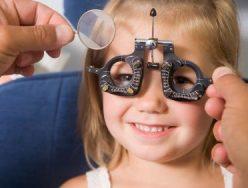Disability Youth Overview Part 2
Last month we talked about working with children with physical disabilities.
We will continue the discussion of physical impairments with visual, hearing and speech and language impairments.
Visual Impairments
A visual impairment is more than someone who wears eyes glasses. Their visual acuity is 20/70 or less, and they will struggle with vision, even when using a corrective prescription. A trainer or teacher may assist the student by using verbal directions and by asking the student for how the student learns best. Because of their limited vision, the student often has poor motor skills and displays easy fatigue. Ask them how they would feel comfortable being guided. Give students mental pictures and descriptive words. Simplifying the game or skill is also effective. Also, give a mental picture of the environment and have a student helper that can stay with the participant as they participate in the activity. If the child is partially sighted use reflective tape for visual guidance.
















